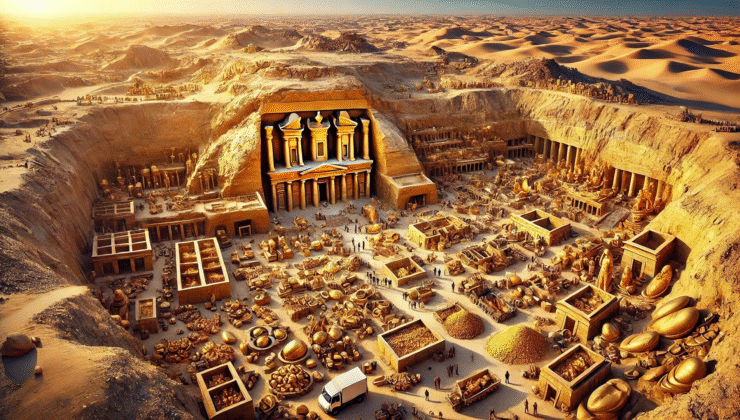Scientists Claim to Find Atlantis Documents, Egyptian Scholars Shocked: Hidden City Beneath the Pyramids?
Introduction to the Recent Discoveries
Renowned Italian researchers Corrado Malanga, Filippo Biondi, and Armando Mei have recently claimed the detection of a mysterious new underground formation beneath the historic Egyptian pyramids. These scientists assert that their investigations have revealed an expansive subterranean network located beneath the iconic Khafre Pyramid. Their previous studies had suggested the existence of a massive underground city approximately 600 meters deep within the Giza Plateau, sparking widespread interest and speculation.
New Findings Beneath the Menkaure Pyramid
Building on their earlier work, the same team now reports that similar subterranean structures may be present beneath the Menkaure Pyramid, which is part of the renowned Giza Pyramid Complex. Utilizing advanced radar pulse technology, they claim to have identified signals indicating the presence of a second underground complex with approximately 90% certainty. These startling claims suggest that the Egyptian pyramids may conceal hidden chambers or entire cities, once thought to be purely mythological or the subject of legend.
Scientific Community’s Response and Criticism
Despite the intriguing nature of these assertions, they have faced significant skepticism and criticism from the global scientific community. Notably, Dr. Zahi Hawass, a prominent Egyptologist and authority on ancient Egyptian archaeology, dismissed these claims outright, describing them as “nonsense” and “fake news.” He emphasized that the allegations lack any credible scientific foundation and are inconsistent with established archaeological knowledge.
Furthermore, Professor Lawrence Conyers, an expert in radar technology affiliated with the University of Denver, highlighted methodological limitations. He pointed out that the equipment used by the Italian team likely cannot penetrate to the depths they claim to have reached, and warned that such interpretations may be exaggerated or unfounded. While underground structures beneath the pyramids could exist, the current evidence presented does not convincingly substantiate these claims.
Issues Surrounding Peer Review and Scientific Validation
The researchers’ findings have yet to undergo rigorous peer review, a critical step in validating scientific discoveries. Without publication in reputable scientific journals, their claims remain highly contentious. Sabine Hossenfelder, a distinguished theoretical physicist, criticized the methodology, stating that the team might have misinterpreted random anomalies in their tomographic images and ignored other data that contradict their hypothesis. She rated their assertions as “a 9 out of 10 in nonsense,” emphasizing the need for cautious interpretation.
Speculative Theories: Atlantis and the Records Hall
The Italian scientists further speculate that the underground complexes could encompass what they term the “Legendary Records Hall.” They suggest this hall might contain ancient documents, artifacts, or knowledge concerning Ancient Egyptian civilization and even the mythical lost continent of Atlantis. However, such claims are considered highly speculative and lack concrete archaeological or scientific evidence to support these extraordinary hypotheses.
The Significance of the Giza Pyramid Complex
The Giza Pyramid Complex remains one of the most studied and revered archaeological sites globally, attracting scholars and tourists alike. The Great Pyramid of Giza, in particular, symbolizes the ingenuity and spiritual beliefs of ancient Egypt. While new discoveries are continually made, experts stress that any claims of hidden structures or secret chambers must be subjected to rigorous scientific validation and archaeological verification.
This article was generated, translated, and reviewed with the assistance of artificial intelligence by an editor or author. For more details, please consult our Terms and Conditions. Vezir Agency
 02:00
02:00


